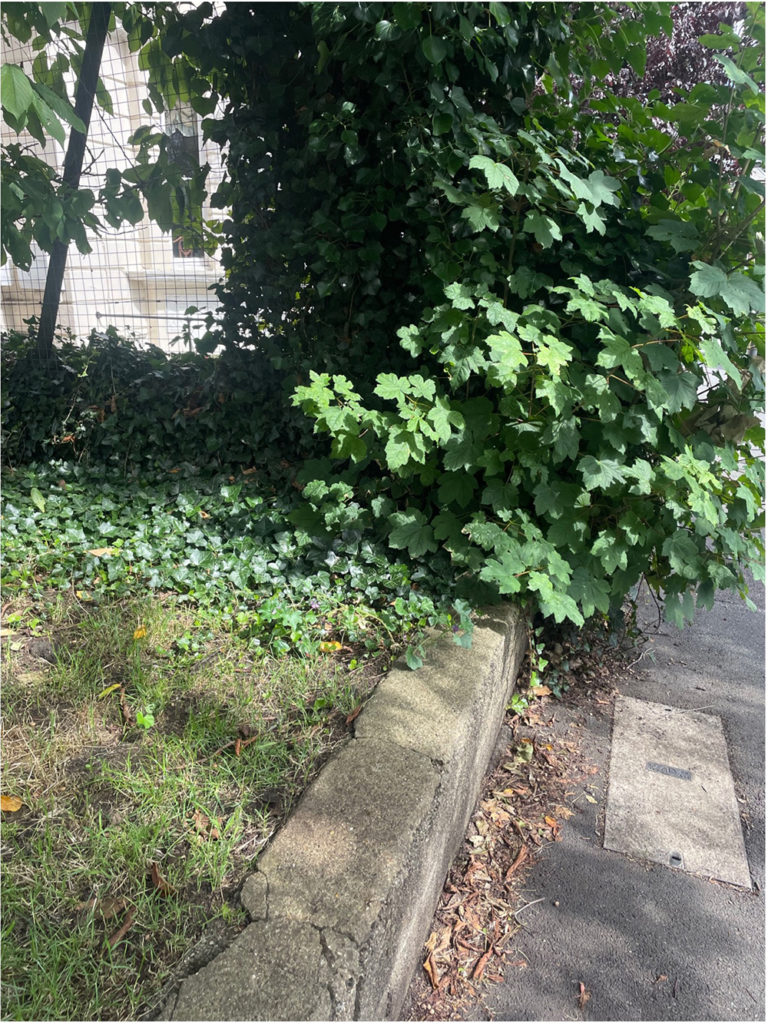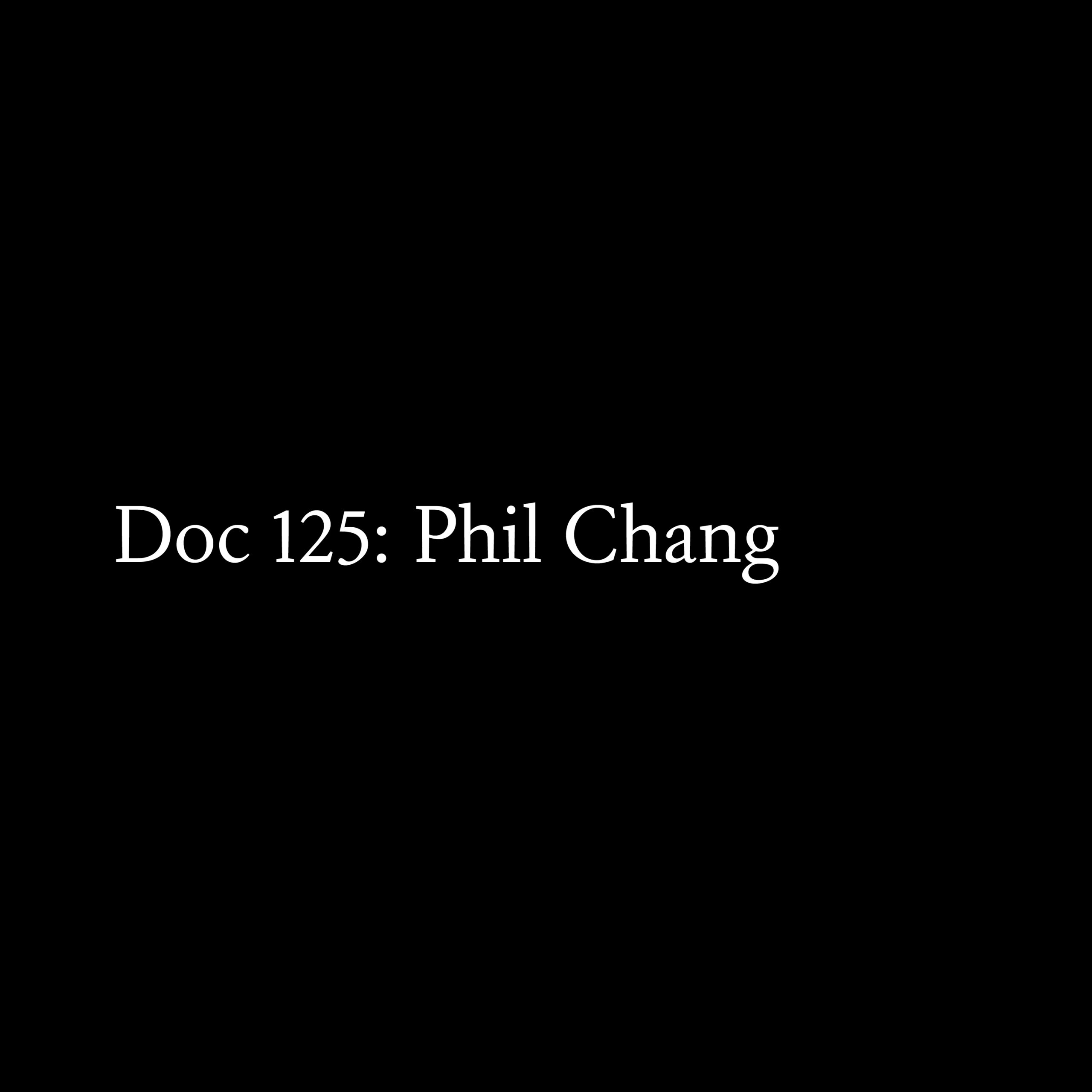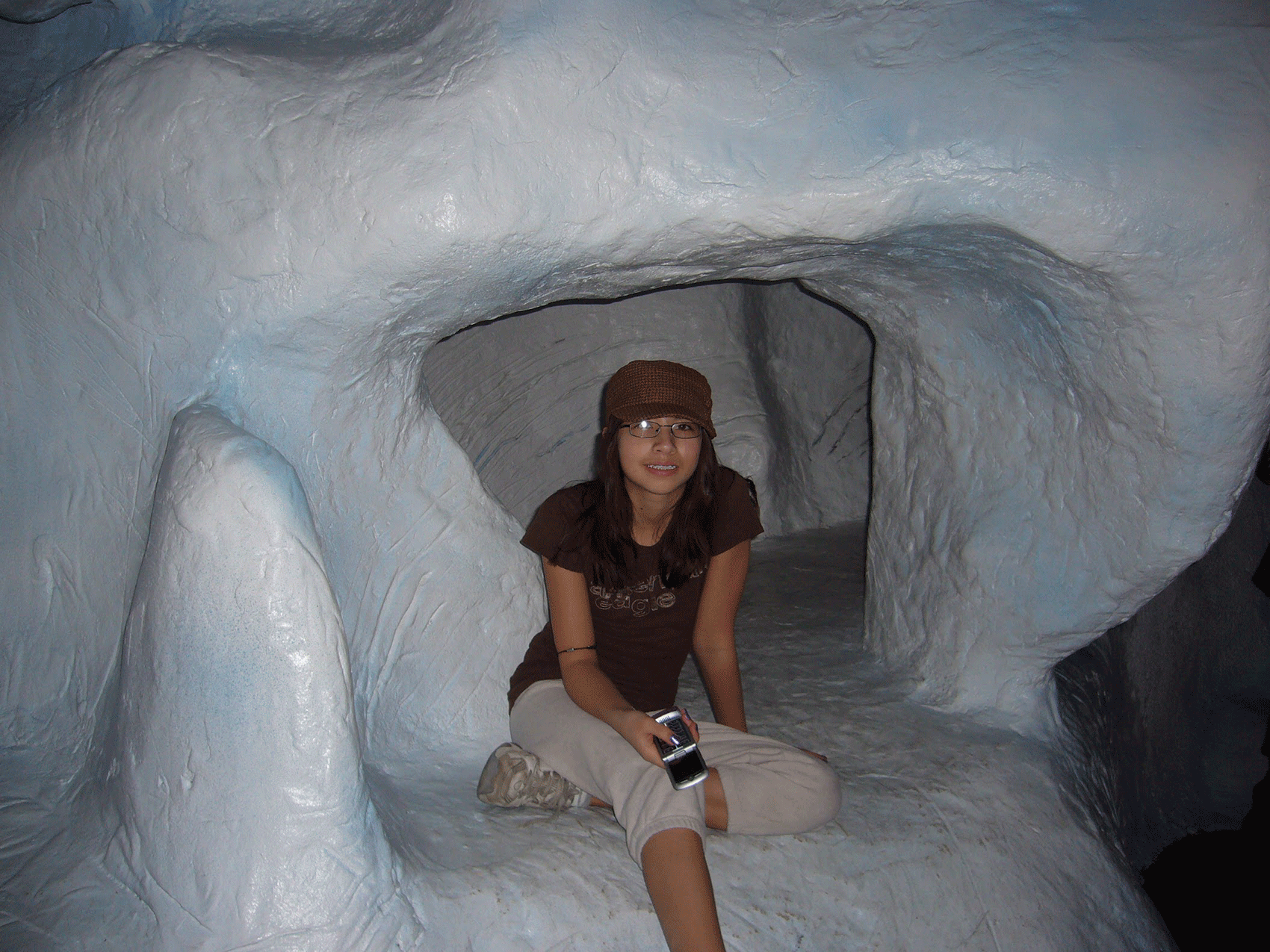
The subject of this photo no longer exists: an empty coke can (full fat) once lay in the corner of this scrubby verge, to the left of the low wall and in front of the wire fence. The can’s red aluminium was chipped and faded at the time of my encounter, which took place roughly between 2004-2006. It must have been autumn, because the can lay on its side among the browning leaves, nestled—I thought—like a baby in a manger.
I take a photo of this spot in 2023, seventeen years after I last walked past it. It is the first week of August, which doesn’t mean anything right now, because unlike the rest of the burning world, the UK is in a slump of low pressure. Lingering storms and downpours; my head is heavy and my joints fizz. I read online about the jet stream—a channel of strong winds located seven miles above the earth’s surface, erstwhile bestower of the clement British summer. But this year the jet stream has decamped further south to Italy, Spain, and Greece. The news is filled with islands on fire; relocation has turned the jet stream’s pleasant winds incendiary.
I take the photo in a patch of fleeting sunlight. I’m not chancing it today; I have an umbrella with me and some soft braces for my joints. I forgot to bring edibles to London, which would have helped. I put my phone away and stand for a while, trying to be present in the moment. The result of this effort is mild panic. Fearing my inability to sufficiently meet the affective requirements of the moment—to rise to its possible significance—I self-fulfil the prophecy and become distracted, restive. The puffy sycamore and ivy aren’t helping. They hide the coke can’s original spot from view and enable a mixture of fantasy and memory. If I push back the leaves, or pulled up some of the undergrowth, maybe the can would still be there?
There’s no great significance behind this can. Its insignificance is perhaps the reason I committed it to memory seventeen years ago. I passed it on my walk to school, somewhere between the age of 12 and 14, thoughts stewing, and then clocked this bit of sparkly trash and admired it—the way it seemed so perfectly placed, snug, as if someone had tucked it into its leafy bed (like I said – baby, manger). I retained a vague mental imprint of the can; a combination of texture and surface—faded red logo, glittery concrete, leaves I felt I could crunch with my eyes. I took all this in, and the taking in elicited an irreversible reaction; I felt suddenly surged by the world to the extent that I thought I might break.
It’s an unboundaried state I know now well, but at the time had no defences against. A painful susceptibility to the details of any given thing, the volume of which will always exceed my capacity—knowing I could never look at anything for long enough to see it all, or prioritise what should be looked at; to rank outlines higher than infill, the way my friends wouldn’t recognise me in the school corridor when I’d fried my hair with straighteners because you’re supposed to see silhouette before detail; how many things my eyes had already glanced over and forgotten, and how many things I would continue to forget: individual leaves, trees, snails on drain covers, dog shits; how much I would miss for needing to listen to the person walking beside me, to keep moving forwards without tripping.
That there was so much available detail, all the time, that I couldn’t take it all in, but also couldn’t bear not to—it felt like unbearable loss. To endure this state requires a stepping back—an unfocusing of the eyes, a casting off from narratable thought, a detachment that is the opposite, actually, of indifference. I couldn’t just wander around all the time being sensually ravished by bits of nothing, mulching on sensory impressions like some Epicurean dandy. In my naivety I thought I could appease inevitable loss with romantic gestures—to commit insignificance to memory as much as significance, to remember the discarded coke can “forever”. I was yet to understand the complete lack of control anyone has over their memory, even in the moment of being unequivocally fucked up by it.
I am trying, here, to avoid the systems words to describe this memory—stimuli, information, input, processing, overload, shutdown. I could frame it in terms of nascent control issues, or the risible sentimentality of tweenhood (later vindicated by the clichéd plastic bag scene in the film American Beauty). I could very easily contextualise the encounter within the events surrounding it; the school I was walking to was one I attended for three years, the longest stretch I did at any one school, and longer still than I’ve ever lived in one room or flat. Not long after my confrontation with the can, I would soon leave this school, for murky reasons involving both coerced choice and chosen coercion. Trauma narratives are unfashionable now, but perhaps more fashionable than Epicurus, who is more interesting anyway on the subject of bodies and flux. Instead of the systems words I try some different ones: abundance, matter, plenum, flux, buzzing, swarming, luxury, excess, dissolution.
I envy my dodgy collagen for its ability to inscribe the chronic scrambling of time and place without recourse to words. My joints—flexible to a fault—are poor proprioceptors, and struggle to locate themselves in space; they are always a few atoms off their best bet. Optimal air pressure limns me in the form of compression, it gives my shape back to me like atmospheric fetish wear. Squeeze me until I exist. When the pressure drops it feels like abandonment; I’m just atoms again, bumping up against a guess at a body.
Daisy Lafarge is a writer based in Glasgow. She is the author of the novel Paul (Granta 2021; Riverhead 2022), which won a Betty Trask Award and was a New York Times Editor’s Choice, and the poetry collection Life Without Air (Granta 2020), which was shortlisted for the T.S. Eliot Prize and awarded Scottish Poetry Book of the Year. Her reviews and essays on ecology, art and literature have appeared in Granta, The New York Times, Art Review, TANK Magazine, The White Review, and elsewhere. Lovebug, a short book on the poetics of infection, will be published by Peninsula Press in 2023.

